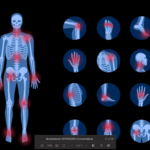NEW YORK (Reuters Health)—Mortality rates in patients with antineutrophil cytoplasmic autoantibody-associated vasculitis (AAV) decreased from 1999 to 2017, according to records from the Centers for Disease Control and Prevention (CDC).
“The mortality attributed to several rare diseases [e.g., hypersensitivity pneumonitis] has increased in recent years,” Alexander W. Steinberg, MD, from Saint Joseph Hospital, Denver, tells Reuters Health by email. “However, for AAV, we see the opposite trend, with decreasing mortality.”
Immunosuppressive therapy has been the mainstay of treatment of active AAV since the 1950s, and a meta-analysis covering 10 studies between 1980 and 2005 suggested that AAV-related mortality had improved.
Dr. Steinberg’s team used data from CDC’s Wide-ranging Online Data for Epidemiologic Research Database to examine contemporary mortality trends of AAV in the U.S.
From 1999 to 2017, there were 11,316 AAV-related deaths, for an age-adjusted mortality rate of 1.86 per 1 million persons.
The mortality rate per 1 million persons was highest among non-Hispanic whites (2.03 vs. 0.77 for non-Hispanic blacks and 1.57 for Hispanics); among men (2.13 vs. 1.65 among women); among Midwesterners (2.15 vs. 2.01 in the West, 1.70 in the South, and 1.66 in the Northeast); and among persons aged 75 to 84 years.
During this period, the mortality rate decreased by an average of 1.6% per year, with an even greater decrease among patients aged 65 to 74 years (2.5% per year), the researchers report in Annals of Internal Medicine, online Oct. 8.1
Granulomatosis with polyangiitis accounted for 85% of the AAV deaths, and the most common underlying cause of death was the vasculitis itself (64%), followed by cardiovascular disease (12%), cancer (6%) and pulmonary disorders (5%).
Decreasing mortality trends were similar when stratified by sex, race and geographic region.
“We speculate that the decrease in the overall mortality, and mortality particularly among persons aged 65 to 74 years, during the study period may reflect increased longevity due to improved treatment of AAV and common comorbid conditions,” Dr. Steinberg says.
“It is impossible to directly identify causality from mortality data in a way that might guide future therapeutic choices,” he says. “We think the trend toward improving mortality suggests the medical community is working in the right direction and we should continue to strive to diagnose and treat these diseases and their comorbidities. Furthermore, the current mortality level suggests that more clinical research into improved treatment is warranted.”
“We hope physicians reading our research come away with a reminder that these diseases, particularly granulomatosis with polyangiitis, still lead to significant mortality despite improvements,” Dr. Steinberg says. “We also hope to spark curiosity and investigation into what is driving these changes and the trends we demonstrate in regional, ethnic, and age group mortality.”
John R. Stone, MD, PhD, of Creighton University, Omaha, Neb., focuses on the racial/ethnic disparities in mortality rates in a linked editorial.
“Extensive evidence shows that U.S. populations with social disadvantages who experience structural violence have worse health and less access to routine and high-quality health care, on average, than the white majority,” he writes.
“Social inequities also reduce health literacy, discourage people from seeking health care, and induce poor health-promotion habits. Given their much greater experience, on average, of these inequities, blacks and Hispanics with AAV will be diagnosed less often and treated accordingly. The same reasoning applies to American Indians, Alaska Natives, and others,” he adds.
“If undiagnosed, no specific treatment will be provided,” he said. “Thus, these groups probably die of vasculitides at greater rates than whites. Hence, reported AAV diagnosis and mortality rates by race/ethnicity are almost certainly not credible for populations experiencing social inequities.”
Duvuru Geetha, MD, of Johns Hopkins University, Baltimore, who studies AAV, tells Reuters Health by email, “There is room for further improvement of management of AAV patients with a goal to decrease mortality and morbidity while trying to avoid under-treatment or over-immunosuppression. Pitfalls of current treatment include delay in diagnosis, frequent relapses in certain subgroup of patients, unknown duration of maintenance immunosuppression and immunosuppression burden, high incidence of end stage renal disease (ESRD), and increased risk of cardiovascular disease.”
“There is a need for longitudinal studies in contemporary cohorts to evaluate the mortality benefits of modern therapies and trends in leading causes of death among AAV patients,” says Dr. Geetha, who was not involved in the study. “Factors associated with geographic differences in mortality should be explored.”
“Published studies demonstrate decreased adherence to safety standards for immunosuppressive drug dosing, monitoring, and use of prophylactic medications when caring for AAV patients,” Dr. Geetha said. “Opportunities to improve care, including compliance with safety standards for delivery of immunosuppressive medications, development of national treatment protocols to reduce heterogeneity in treatment, and increased vigilance for infection, remain a priority for management of AAV patients.”
“AAV patients should be followed at vasculitis centers and monitored closely for relapse, monitoring of side effects of immunosuppression, and cardiovascular risk factor reduction and malignancy surveillance,” he says.
Reference
- Steinberg AW, Wechsler ME, Fernández Pérez ER. Trends in antineutrophil cytoplasmic autoantibody-associated vasculitis-related mortality in the U.S., 1999 to 2017. Ann Intern Med. 2019 Oct 8. [Epub ahead of print]


